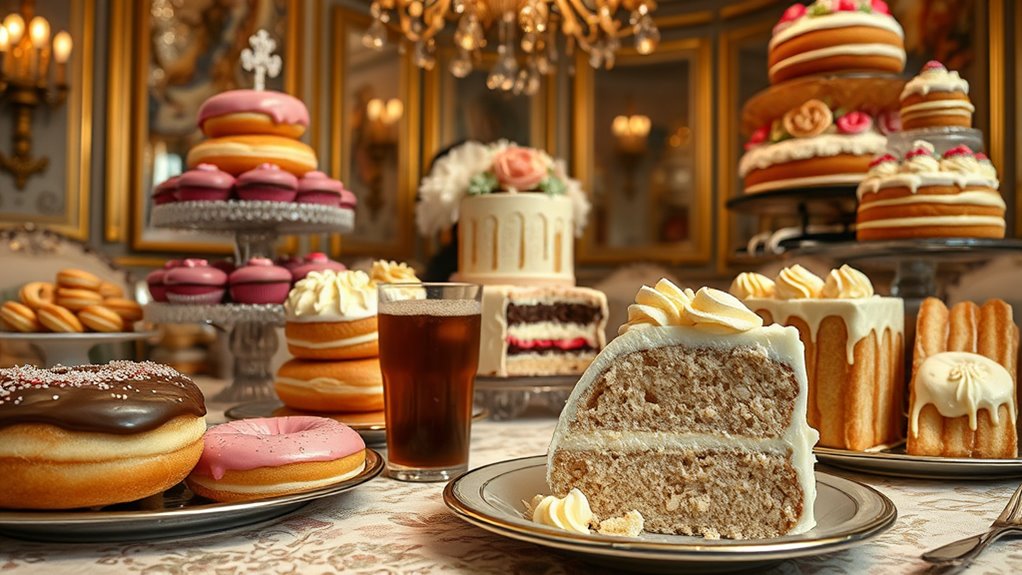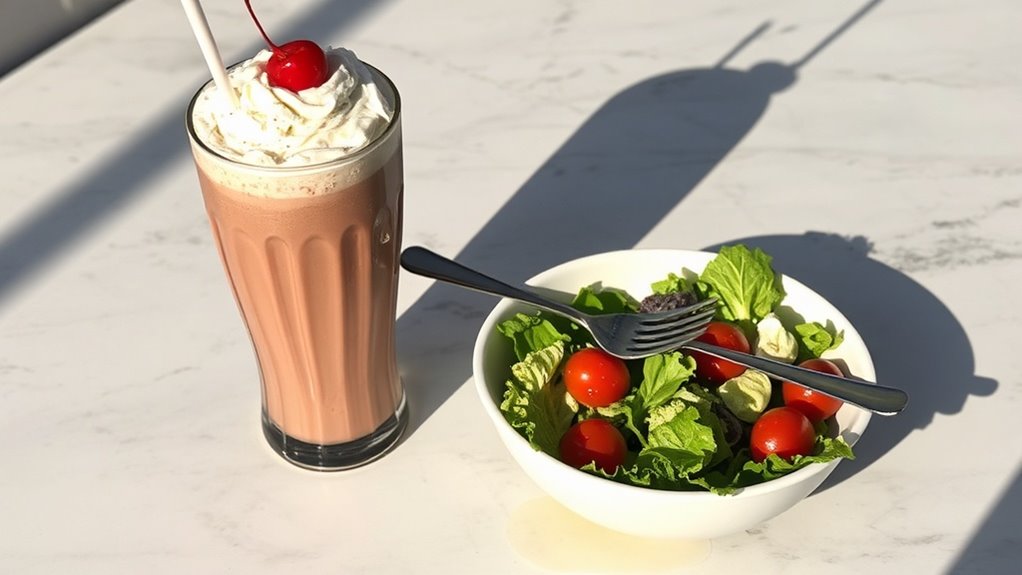The #1 Daily Habit That’s Secretly Making You Fat!
Ever find yourself munching on snacks while binge-watching your favorite show or scrolling through social media? You’re not alone. This habit of mindless eating might be sneaking extra calories into your diet without you even noticing. It’s easy to lose track of what and how much you’re consuming when distractions take over. But what if there’s a simple way to flip the script and actually enjoy your meals more? Let’s explore how you can break free from this cycle.
The Hidden Dangers of Mindless Eating
Have you ever found yourself mindlessly munching on snacks while binge-watching your favorite show? You grab the chips or popcorn without even thinking, right?
Those seemingly harmless snacks can lead to hidden weight gain habits that sneak up on you. You mightn’t realize it, but when you eat while distracted, it’s easy to lose track of how much you’re consuming. Before you know it, that one bag of chips turns into three!
To combat this, try portioning out your snacks before diving into your show. This way, you can enjoy your favorite treats without overindulging.
How Multitasking Affects Your Food Choices
Multitasking might seem like a great way to get things done, but when it comes to food choices, it can lead to some pretty poor decisions.
Picture this: you’re scrolling through your phone while nibbling on snacks, barely aware of what you’re eating. That mindless munching often results in consuming way more calories than you realize.
When you’re juggling tasks, you might grab the easiest thing around, like chips or cookies, instead of healthier options. Plus, you miss out on enjoying your meal, which can leave you feeling unsatisfied.
Instead, try to focus on one thing at a time, especially when it comes to eating. It’ll help you make better choices and truly appreciate your food, making weight loss a bit easier.
The Role of Emotional Eating in Weight Gain
When you’re feeling stressed, bored, or even just a bit down, it’s all too easy to reach for comfort food as a quick fix. You might find yourself munching on chips or diving into ice cream, thinking it’ll make you feel better.
But here’s the catch: emotional eating can lead to weight gain because you’re not really hungry. Instead, you’re trying to fill an emotional void with food. It’s important to recognize this pattern.
Next time you feel the urge to snack, pause and ask yourself if you’re truly hungry or just trying to escape your feelings. Finding healthier ways to cope, like going for a walk or chatting with a friend, can help you break the cycle and keep those extra pounds at bay.
Recognizing Portion Sizes While Distracted
Eating while distracted is a common habit that can sneak up on you, especially if you’re already in a cycle of emotional eating.
When your attention is elsewhere—like scrolling through your phone, binge-watching a show, or working—it’s easy to lose track of how much you’re eating. This can lead to bigger portions and extra calories.
To help you recognize portion sizes while distracted, consider these tips:
- Use smaller plates****: They trick your brain into thinking you’re eating more.
- Pre-portion snacks: Instead of eating straight from the bag, measure out a serving.
- Focus on your food: Try to sit down and enjoy your meal without distractions.
- Drink water: It helps you feel fuller, reducing portion sizes naturally.
Stay aware and make mindful choices!
Tips to Break the Cycle of Mindless Snacking
Even though snacking can be a delightful way to satisfy cravings, it often turns into mindless munching that sabotages your healthy eating goals.
To break this cycle, start by keeping snacks out of sight. If they’re not easily accessible, you’re less likely to grab them mindlessly.
Next, set specific times for snacking instead of eating whenever the mood strikes. This helps you become more aware of what you’re consuming.
Also, try switching to healthier options, like fruits or nuts, so when you do snack, it’s a better choice.
Finally, pay attention to your feelings and avoid snacking when you’re bored or stressed.
Creating a Mindful Eating Environment
Creating a mindful eating environment can make all the difference in how you approach food. When you set the stage for meals, you’re more likely to enjoy and appreciate what you eat.
Here are some simple tips to create that environment:
-
Dine at a table: Skip the couch and focus on your meal.
-
Limit distractions: Turn off the TV and put away your phone to really savor each bite.
-
Use smaller plates: This can help control portions and prevent overeating.
-
Set the mood: Soft lighting or calming music can make mealtime more enjoyable.





